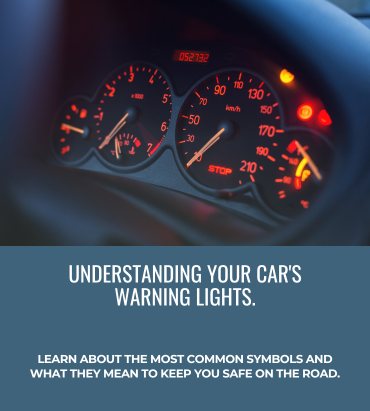Introduction:
Modern vehicles come equipped with a plethora of warning lights on the dashboard to alert you when something is amiss. These warning lights can be a lifesaver, but only if you understand what they mean and take appropriate action when they appear. In this article, we’ll guide you through some of the most common dashboard symbols, explain their meanings, and detail the actions drivers should take when they illuminate.
1. Check Engine Light:
The check engine light, often depicted as an engine-shaped symbol, indicates an issue with your car’s engine or emissions system. When this light comes on, it’s essential to have your vehicle diagnosed by a mechanic to identify the problem. Ignoring it can lead to further damage and decreased fuel efficiency.
2. Tire Pressure Warning:
This light, resembling an exclamation mark inside a flat tire, warns you of low tire pressure. It’s crucial to check your tire pressures immediately and inflate them to the recommended levels. Low tire pressure can lead to reduced traction, decreased fuel efficiency, and tire damage.
3. Battery Warning:
The battery warning light, typically a battery-shaped symbol, indicates a problem with your vehicle’s charging system. When it comes on, it may be due to a failing battery, alternator, or drive belt. Have your car’s charging system inspected to avoid a sudden breakdown.
4. Oil Pressure Warning:
The oil pressure warning light, often resembling an oil can or oil drop, indicates low oil pressure in your engine. This can lead to serious engine damage if not addressed promptly. Stop driving, turn off the engine, and check the oil level. If it’s low, top it up, and if the light persists, consult a mechanic.
5. ABS Warning:
The Anti-Lock Braking System (ABS) warning light, depicted as ABS letters inside a circle, alerts you to a problem with your ABS system. While your regular brakes should still work, the ABS may not function correctly. Get this system checked by a professional.
6. Airbag Warning:
The airbag warning light, usually an airbag-shaped symbol, indicates an issue with your car’s airbag system. Your airbags may not deploy in an accident if this light is on. Have the system inspected immediately for safety reasons.
7. Coolant Temperature Warning:
The coolant temperature warning light, often resembling a thermometer or waves, alerts you to an overheating engine. Stop your vehicle and allow it to cool down. Check the coolant level and radiator for leaks. Continuing to drive with an overheated engine can cause severe damage.
Actions to Take:
When any of these warning lights appear, follow these general actions:
- Don’t panic. Most warning lights are indicators of issues that can be addressed.
- Refer to your owner’s manual for specific guidance and symbols related to your vehicle.
- If the light is red and/or flashing, pull over safely and turn off the engine.
- Check for immediate issues, like low fluid levels or a flat tire, that you can address.
- If you can’t resolve the issue yourself, have your vehicle inspected by a qualified mechanic.
Conclusion:
Understanding your car’s warning lights is vital for your safety and the longevity of your vehicle. Ignoring these lights can lead to more significant and costly problems. By being informed about what these dashboard symbols mean and taking the appropriate actions when they appear, you can ensure a safer and more reliable driving experience. Regular vehicle maintenance can also help prevent many of these warning lights from ever coming on.


